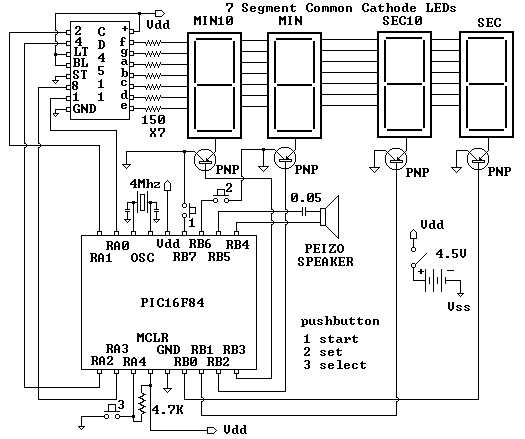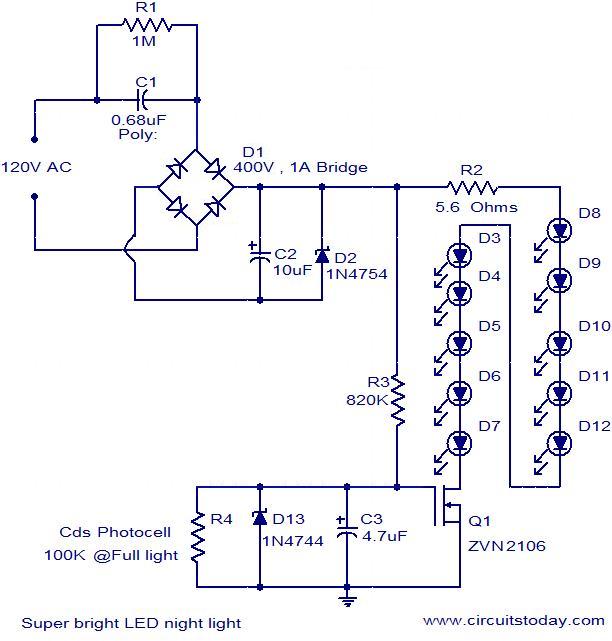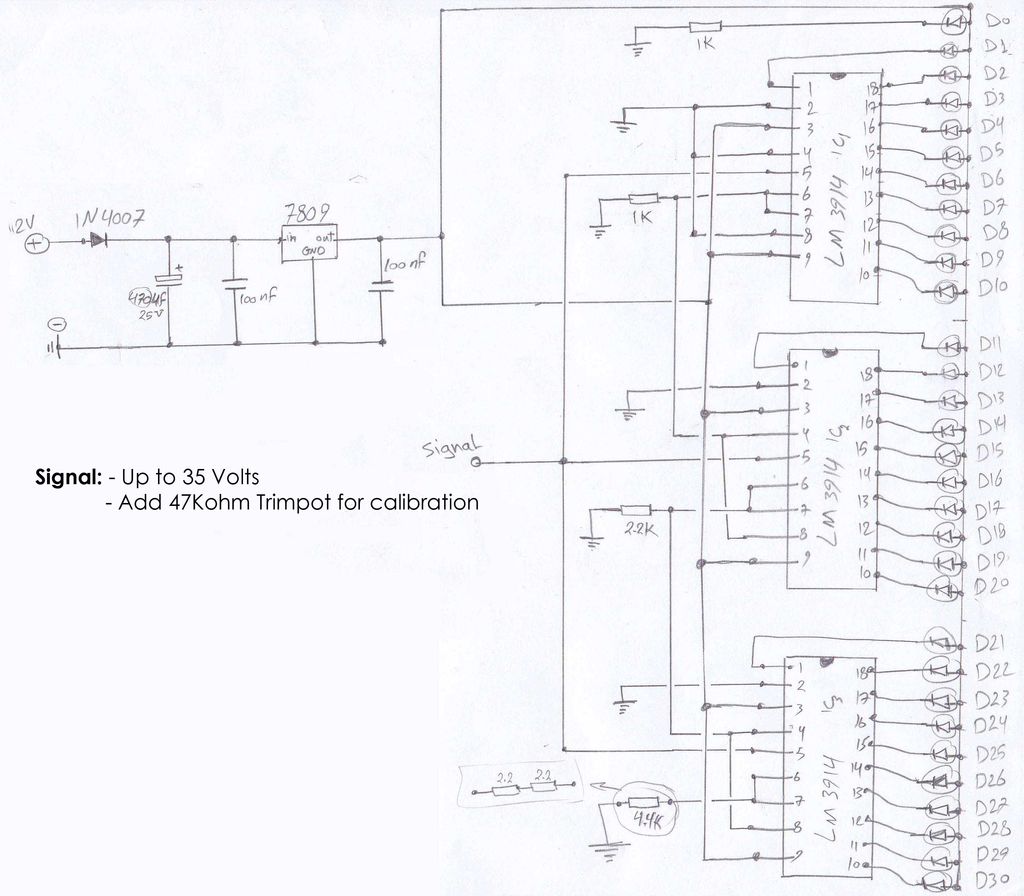
7Segment Common LED UV Exposure Box

7-Segment Common LED UV Exposure Box Circuit Diagram. Features: Utilizes Stan Ocker's circuit design, employing a PIC16F84 microcontroller to count and display the time.
The 7-Segment Common LED UV Exposure Box Circuit is designed for applications requiring precise timing and display functionalities, particularly in UV exposure processes. The core of the circuit is the PIC16F84 microcontroller, which is programmed to manage the timing operations and control the display of the 7-segment LEDs.
The circuit typically consists of the following components: a PIC16F84 microcontroller, a set of 7-segment displays, resistors, capacitors, and a power supply. The microcontroller is responsible for counting the elapsed time during the exposure process. It can be programmed to start counting when the UV light is activated and to stop once the desired exposure time is reached.
The 7-segment displays are connected to the microcontroller through a series of output pins. Each segment of the display is driven by a specific pin on the PIC16F84, allowing for the representation of numerical values from 0 to 9. Additional logic may be integrated to handle transitions between tens and units, ensuring that the display accurately reflects the total elapsed time.
Resistors are used to limit the current flowing through the LEDs of the 7-segment displays, preventing damage and ensuring longevity. Capacitors may be included in the circuit to stabilize the power supply and filter out noise, which can be crucial for maintaining accurate timing.
In summary, the 7-Segment Common LED UV Exposure Box Circuit is a practical implementation of timing and display technology, effectively utilizing the capabilities of the PIC16F84 microcontroller to manage UV exposure processes accurately. This design can be adapted for various applications in fields such as photography, material science, and electronics, where controlled exposure to UV light is essential.Description: 7Segment Common LED UV Exposure Box Circuit Diagram. Features: used Stan Ocker`s circuit, uses a PIC16F84 to count and display the time .. 🔗 External reference
The 7-Segment Common LED UV Exposure Box Circuit is designed for applications requiring precise timing and display functionalities, particularly in UV exposure processes. The core of the circuit is the PIC16F84 microcontroller, which is programmed to manage the timing operations and control the display of the 7-segment LEDs.
The circuit typically consists of the following components: a PIC16F84 microcontroller, a set of 7-segment displays, resistors, capacitors, and a power supply. The microcontroller is responsible for counting the elapsed time during the exposure process. It can be programmed to start counting when the UV light is activated and to stop once the desired exposure time is reached.
The 7-segment displays are connected to the microcontroller through a series of output pins. Each segment of the display is driven by a specific pin on the PIC16F84, allowing for the representation of numerical values from 0 to 9. Additional logic may be integrated to handle transitions between tens and units, ensuring that the display accurately reflects the total elapsed time.
Resistors are used to limit the current flowing through the LEDs of the 7-segment displays, preventing damage and ensuring longevity. Capacitors may be included in the circuit to stabilize the power supply and filter out noise, which can be crucial for maintaining accurate timing.
In summary, the 7-Segment Common LED UV Exposure Box Circuit is a practical implementation of timing and display technology, effectively utilizing the capabilities of the PIC16F84 microcontroller to manage UV exposure processes accurately. This design can be adapted for various applications in fields such as photography, material science, and electronics, where controlled exposure to UV light is essential.Description: 7Segment Common LED UV Exposure Box Circuit Diagram. Features: used Stan Ocker`s circuit, uses a PIC16F84 to count and display the time .. 🔗 External reference





